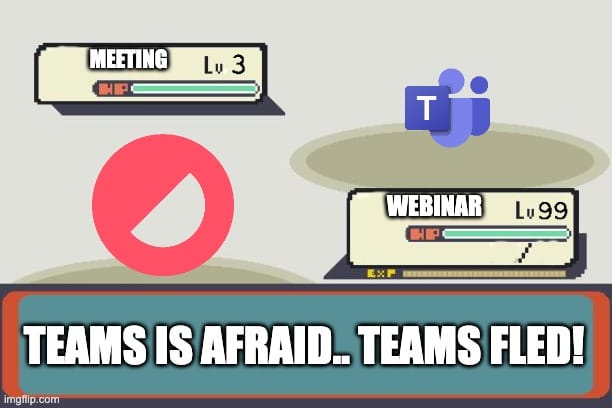
You're planning your next marketing campaign. You need to reach hundreds of prospects, educate them about your solution, and generate qualified leads. The key difference is choosing whether you should host a webinar or organize a meeting.
This decision impacts your marketing ROI significantly. Webinars and meetings serve different purposes in your marketing strategy. Understanding when to use each format will transform your lead generation results. This decision has become even more critical in 2025 with a rapid shift in technological innovation, such as Microsoft Teams introducing AI-driven features like real-time voice interpretation in nine languages. The question between an in person meeting and a video meeting is evolving quickly with the changes in the people's habits.
Choose correctly, and you'll build authority while capturing high-quality prospects. Choose poorly, and you'll waste time, budget, and opportunities. This guide shows you exactly when to use each format.
You'll discover the key differences between what is a webinar and a meeting, as well as the difference between a webinar and other virtual event solutions, learn when each format works best, and get a practical framework for making the right choice every time.
What are the key differences between webinars and meetings?
Webinars and meetings create different experiences for both hosts and participants. The format you choose determines how your audience will interact with your content.
Meetings prioritize collaboration and dialogue. Every participant can interact freely, share screens, and contribute equally to the conversation. This approach works well for brainstorming sessions, client consultations, and team planning.
Webinars focus on controlled content delivery. You maintain complete control over the narrative while attendees listen and learn. Participants can engage through chat, polling, and questions, but only designated panelists are enabled to speak throughout the session.
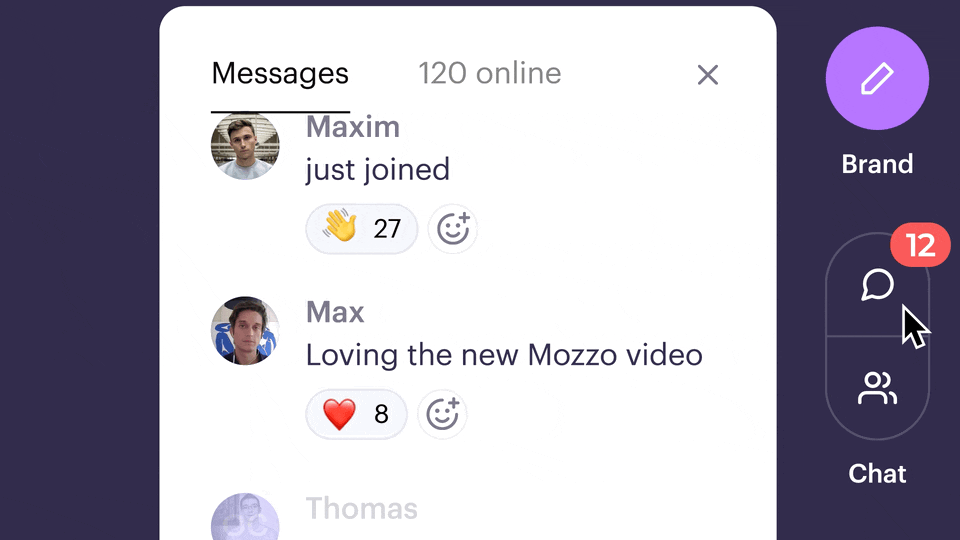
The interaction models differ significantly between formats. This distinction becomes crucial when you consider that executives now spend nearly 23 hours weekly in meetings, up from less than 10 hours in the 1960s, making format choice a strategic business decision. Meeting participants enjoy full interactive capabilities while webinar attendees experience controlled interaction designed for educational purposes.
Core purpose and function comparison
Video conferences excel at collaborative problem-solving. They create environments where multiple perspectives merge to generate solutions. Each participant can unmute themselves, access screen sharing features, and take control when needed.
This collaborative nature makes meetings valuable for internal workflows. Your team can brainstorm strategy, review campaign performance, and make real-time decisions together. The workplace environment benefits from this interactive approach where individual contributions shape outcomes.
Webinars serve as educational broadcasting platforms. They position you as the industry expert teaching valuable insights to your target audience. This communication model scales your expertise efficiently through streaming technology.
Online events like webinars build authority while generating leads. Online virtual events like webinars build authority while generating leads. Every attendee shows interest in your topic. This self-selection creates a list of pre-qualified prospects for your sales team to manage effectively.
Audience interaction models: how attendees engage differently
Meeting participants have full interactive access. They can speak when appropriate, access whiteboard features for demonstrations, and respond with visible reactions that everyone sees. This creates dynamic conversations.
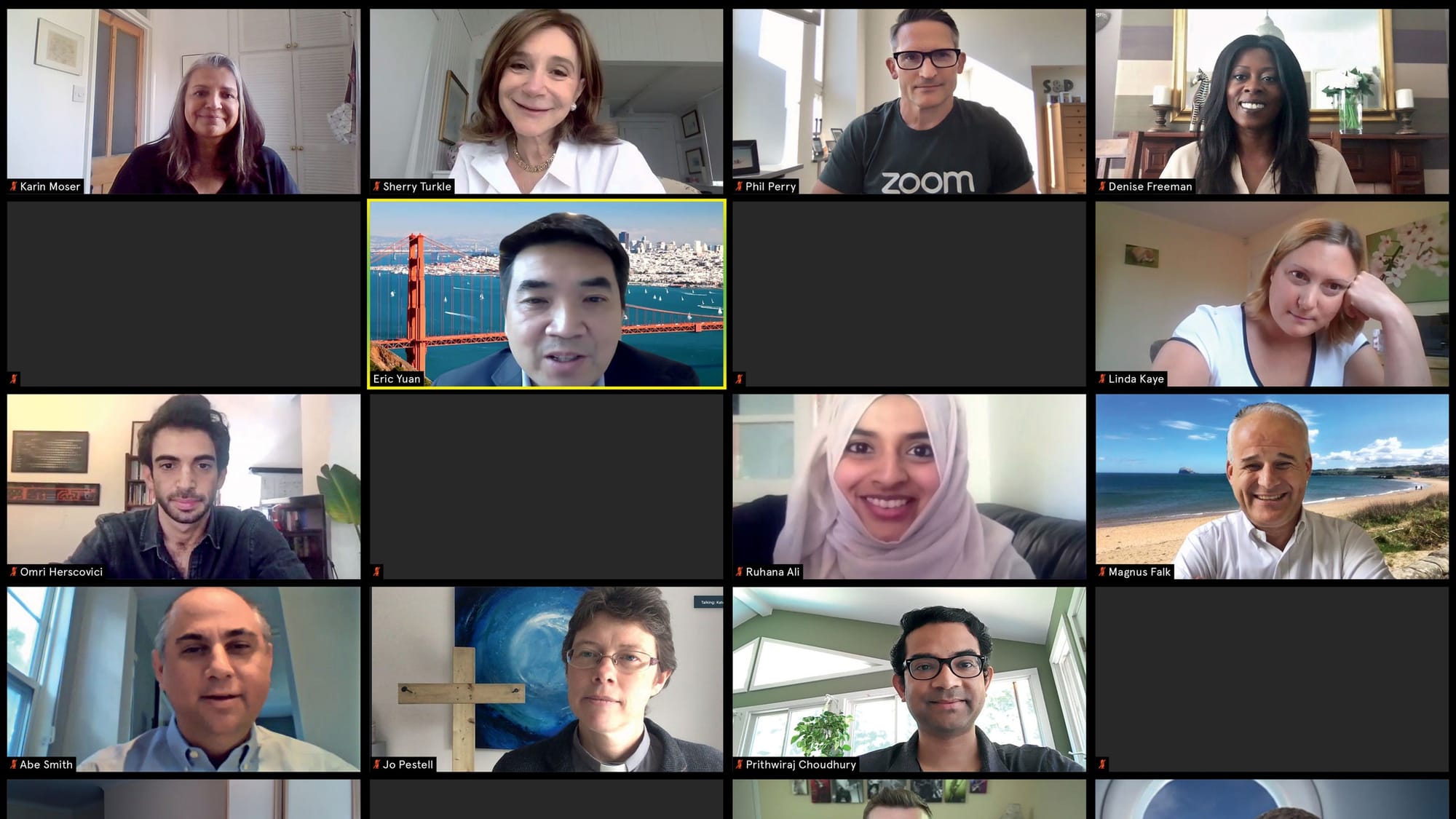
Breakout rooms add collaboration layers. Small group discussions happen simultaneously before participants share insights with the larger group. This feature maximizes engagement across larger groups while maintaining the ability to interact meaningfully.
Webinar attendees experience structured interaction. Most participants remain on mute throughout the online event while consuming your educational content. They engage through chat messages, polling responses, and structured questions submissions.
This controlled environment serves marketing purposes effectively. You maintain message consistency and prevent interruptions that could derail your presentation. The result is professional, focused content delivery designed for optimal impact.
Content distribution vs collaborative discussion
Meetings generate ideas through collective thinking. They work best when you need feedback from multiple stakeholders to solve problems or develop strategies. The conversational nature encourages creative solutions based on diverse perspectives.
Meeting documentation focuses on decisions made and next steps assigned. These recordings serve internal purposes rather than external marketing initiatives, helping teams transfer knowledge and maintain accountability.
Webinars distribute expertise at scale. They transform your knowledge into marketing assets that continue working after the live event ends. One presentation can educate hundreds of prospects simultaneously through professional streaming.
Content repurposing opportunities multiply with webinars. The structured presentation format translates easily into blog posts, social media content, and sales materials. This amplifies your marketing investment compared to meeting content.
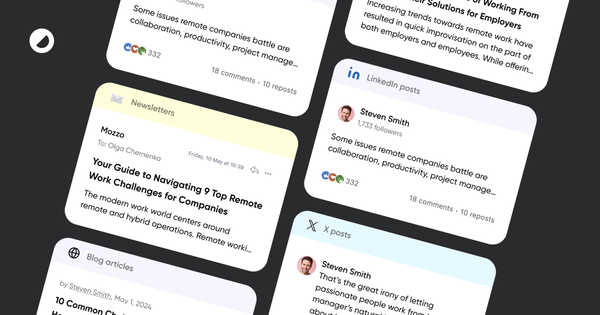
Technical requirements and setup comparison
Technical quality impacts audience perception of your professionalism and credibility. Different formats demand different production standards based on their purpose and audience expectations.
Meeting hosts need basic technical capabilities. A laptop camera, decent internet connection, and quiet environment typically work well. Consider testing your webcam and microphone before important events. Most conferencing software handles small groups effectively with minimal setup and standard settings.
Webinar hosts require professional broadcasting standards. Poor video and audio quality reflects badly on your brand when presenting to large audiences. Investment in proper equipment becomes essential for success and credibility.
The difference in technical requirements affects your preparation time and budget. Meetings allow for more flexibility while webinars demand careful planning and professional execution.
Bandwidth and equipment prerequisites
Meeting participants share bandwidth load across the group. Each person contributes to the overall video and audio stream. Standard internet connections handle most small group meetings without significant issues, and participants can adjust their individual settings as needed.
Connection problems in meetings disrupt everyone but typically resolve quickly. Participants can dial in via phone as backup while troubleshooting their internet connection, maintaining their ability to participate effectively.
Webinar hosts bear full responsibility for broadcast quality. Your internet connection must reliably stream high-quality video and audio to hundreds of simultaneous viewers. High-speed internet connections become necessary for professional webinars with reliable streaming.
Equipment requirements scale with audience expectations. Professional video and audio equipment distinguishes your webinars from amateur attempts. This investment pays dividends in audience engagement and lead quality, creating the ideal viewing experience.

Choose the most dependable webinar platform
Contrast offers a complete solution—no extra tools required.
Start for freeParticipant limits and platform capacity
Most meeting platforms accommodate dozens to hundreds of participants in basic plans. Larger groups require enterprise pricing that can strain marketing budgets significantly, depending on your chosen service provider.
Group dynamics change as meeting size increases. Interactive sessions become challenging with too many active participants. Engagement drops and coordination becomes difficult when too many people have speaking roles simultaneously.
The best webinar platforms support thousands of attendees in mid-tier plans. This scalability makes large audience events economically viable for marketing purposes, providing access to broader markets efficiently.
Large-scale announcements benefit from webinar scalability. You can reach your entire target market in a single session rather than repeating presentations multiple times to smaller groups.
When should you use a webinar instead of a meeting?
The audience type determines the optimal format choice. Internal teams need collaboration while external prospects need education and demonstration designed for their specific needs.
Format selection impacts your marketing results more than platform features or production quality. Understanding your audience's needs guides the right decision based on their expectations and your objectives.
Internal vs external audience considerations
Internal audiences expect collaborative participation. Your team members want to contribute ideas, ask questions, and influence outcomes. They need interactive sessions where everyone can speak and share insights with full access to meeting features.
Workplace productivity depends on effective team communication. Meetings facilitate the collaborative thinking that drives innovation and problem-solving within your organization, enabling knowledge transfer and collective decision-making.
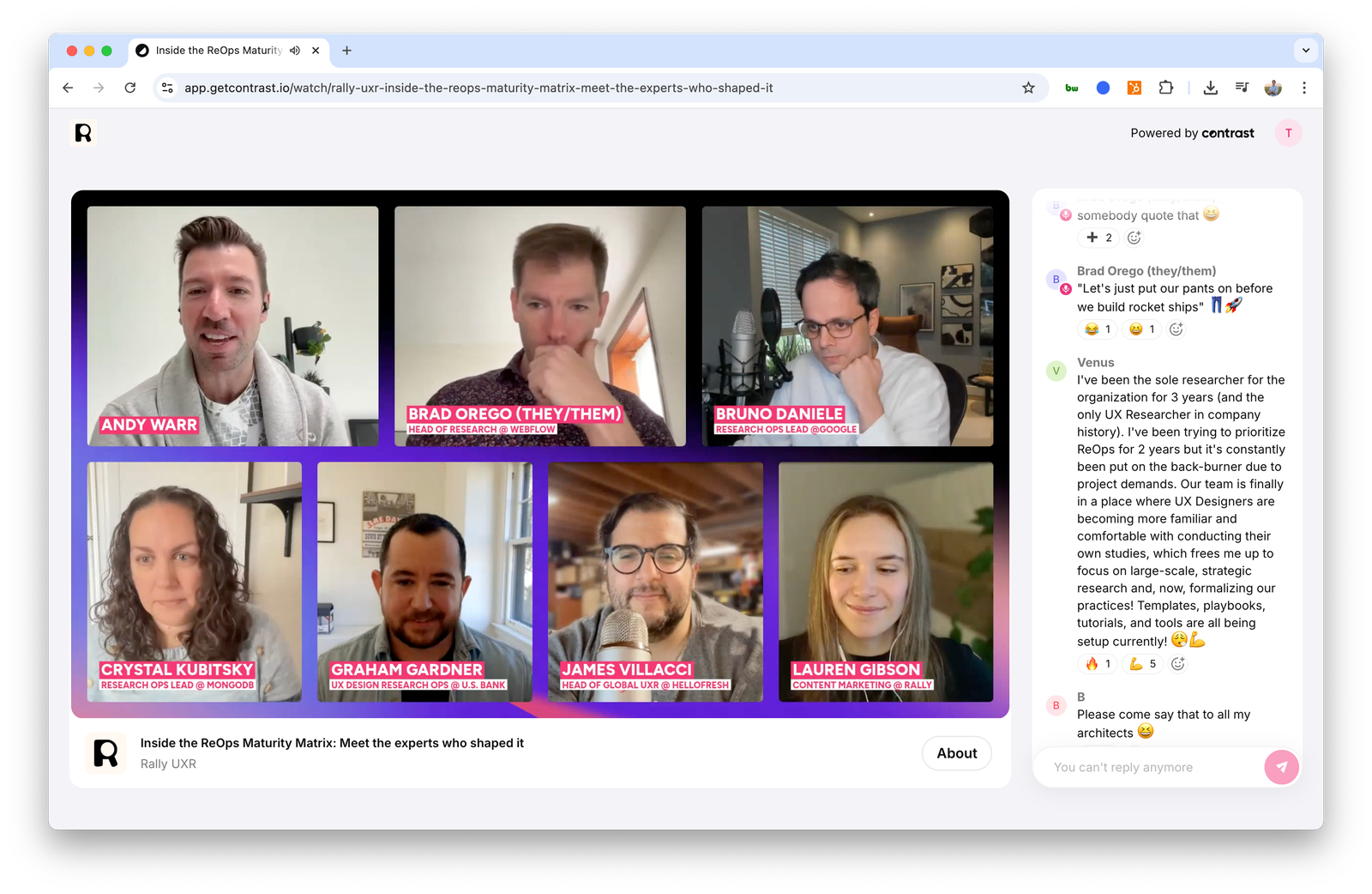
External audiences seek expertise and value. Prospects join your events to learn from your knowledge and evaluate your credibility. They want you to demonstrate authority and provide actionable insights through professional presentation.
Lead generation requires controlled messaging. Webinars let you guide prospects through your narrative without interruption or competitive questions that could derail your presentation and custom-designed sales journey.
Marketing and lead generation scenarios
Product demonstrations scale effectively through webinars. You can show your solution to hundreds of prospects simultaneously while maintaining consistent messaging and professional presentation quality with ideal viewing conditions.
Live demonstrations create urgency and social proof. When hundreds of people view your demo, visible engagement and reactions validate your solution's value to skeptical prospects, creating psychological momentum toward purchase decisions.
Sales meetings excel at personalized consultations. The intimate setting allows discovery, objection handling, and customized presentations that webinars cannot match due to their one-to-many broadcast nature.
Conversion rates differ significantly between formats. Sales meetings generally convert
Large audience presentations and training
Meeting effectiveness decreases as group size increases. Beyond a certain size, coordination becomes increasingly difficult and engagement drops noticeably as individual voices get lost in the crowd.
Webinars improve with audience size. Larger crowds create social proof and energy that enhances the experience for everyone involved, making the content feel more valuable and authoritative.
Effective webinar attendance typically includes hundreds of participants for marketing purposes. This size provides sufficient social proof without requiring massive promotional investment or complex technical infrastructure.
Educational content works well in webinar format, especially for virtual training. You can position yourself as the industry expert while delivering genuine value that prospects appreciate and remember, establishing thought leadership effectively.
How to choose between a meeting and webinar: decision framework
Systematic decision-making prevents format mistakes that waste time and reduce campaign effectiveness. A clear framework guides optimal choices based on objective criteria.
Audience size provides the clearest initial guidance for format selection. Scale requirements immediately eliminate certain options while highlighting others that match your reach goals.
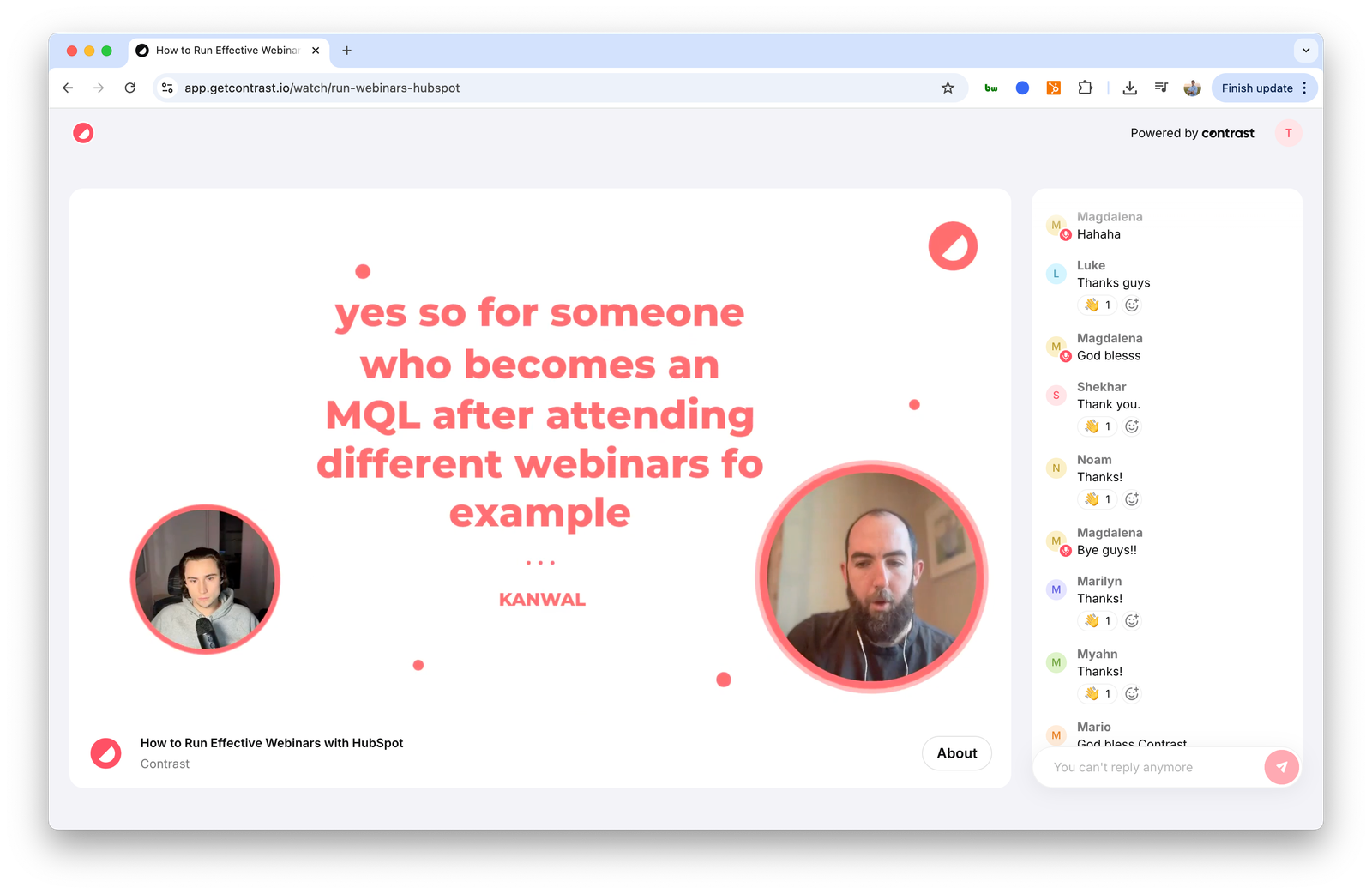
Understanding your objectives helps narrow the choice. Different formats serve different marketing purposes and deliver different types of value to your organization and prospects.
Audience size and engagement requirements
Smaller groups work well in meeting format where everyone can participate meaningfully without coordination challenges. Interactive sessions thrive with smaller audiences that encourage full participation and individual contributions.
Medium-sized groups enter the hybrid zone where success depends more on your specific objectives than absolute audience size. Collaboration becomes harder but still possible with good facilitation and clear roles.
Large groups typically require webinar format for practical management and professional presentation quality. Large audiences create social proof that enhances marketing impact significantly while enabling efficient content delivery.
Engagement expectations vary by format and audience size. Smaller groups expect interaction while larger audiences accept controlled presentation styles more readily, depending on their reason for attending.
Content type and technical needs
Collaborative content requires meeting format regardless of audience size. Strategy development, problem-solving, and team planning need feedback from multiple participants to succeed effectively.
Educational content works better in webinar format where you can control pacing, prevent interruptions, and ensure message consistency across all attendees with professional streaming quality.
Technical requirements scale with format complexity. Meetings need basic video conferencing capabilities while webinars demand professional broadcasting quality and advanced features for optimal presentation.
Marketing integration favors webinar platforms that connect directly with your CRM and marketing automation, email marketing, and lead scoring systems for seamless campaign management and prospect tracking.
Real-world use cases: when each format excels
Practical examples illustrate format selection principles better than theoretical guidelines. These scenarios show how successful marketing teams make format decisions based on specific objectives.
Lead generation campaigns demonstrate webinar advantages for reaching large prospect pools efficiently while maintaining professional presentation standards and consistent messaging.


Master Webinar Lead Generation
Start for free up to 30 registrants. No credit card needed.
Start for freeThe choice becomes clearer when you examine specific business scenarios. Each format has situations where it clearly outperforms the other based on audience needs and business objectives.
Webinar success scenarios
Product launch announcements benefit from webinar scale and control. You can reach thousands of prospects simultaneously while maintaining consistent messaging and professional production quality with ideal viewing conditions.
Educational webinar series establish thought leadership while generating ongoing lead flow. Monthly webinars position you as the industry expert prospects turn to for insights and guidance on industry challenges.
Demonstration webinars showcase solutions effectively to large audiences without requiring individual presentations for each prospect group. Social proof accelerates purchase decisions when prospects see others engaging with your content through visible reactions.
Lead qualification improves when prospects self-select by attending your educational webinars. These attendees show genuine interest in your topic area and solution category, making them easier to convert through follow-up campaigns.
Meeting optimization strategies
Sales consultations require meeting intimacy for effective discovery, objection handling, and relationship building. Personal connections drive complex purchase decisions that webinars cannot influence adequately through one-way communication.
Client strategy sessions need collaborative discussion where multiple stakeholders contribute to planning and decision-making processes. Interactive workshops generate better outcomes than one-way presentations by enabling real-time feedback and adjustment.
Internal team coordination depends on meeting collaboration for effective problem-solving and strategic planning. Workplace productivity requires interactive communication that webinars cannot provide due to their broadcast nature.
Relationship building happens more effectively in smaller, more personal meeting environments where participants can develop genuine connections and trust through direct interaction and individual attention.
Performance measurement essentials
Measurement frameworks differ significantly between webinars and meetings because success metrics align with different objectives and value creation methods based on format purpose.
Webinar metrics focus on reach, engagement, and lead generation while meeting metrics emphasize collaboration quality and objective achievement depending on the intended outcomes.
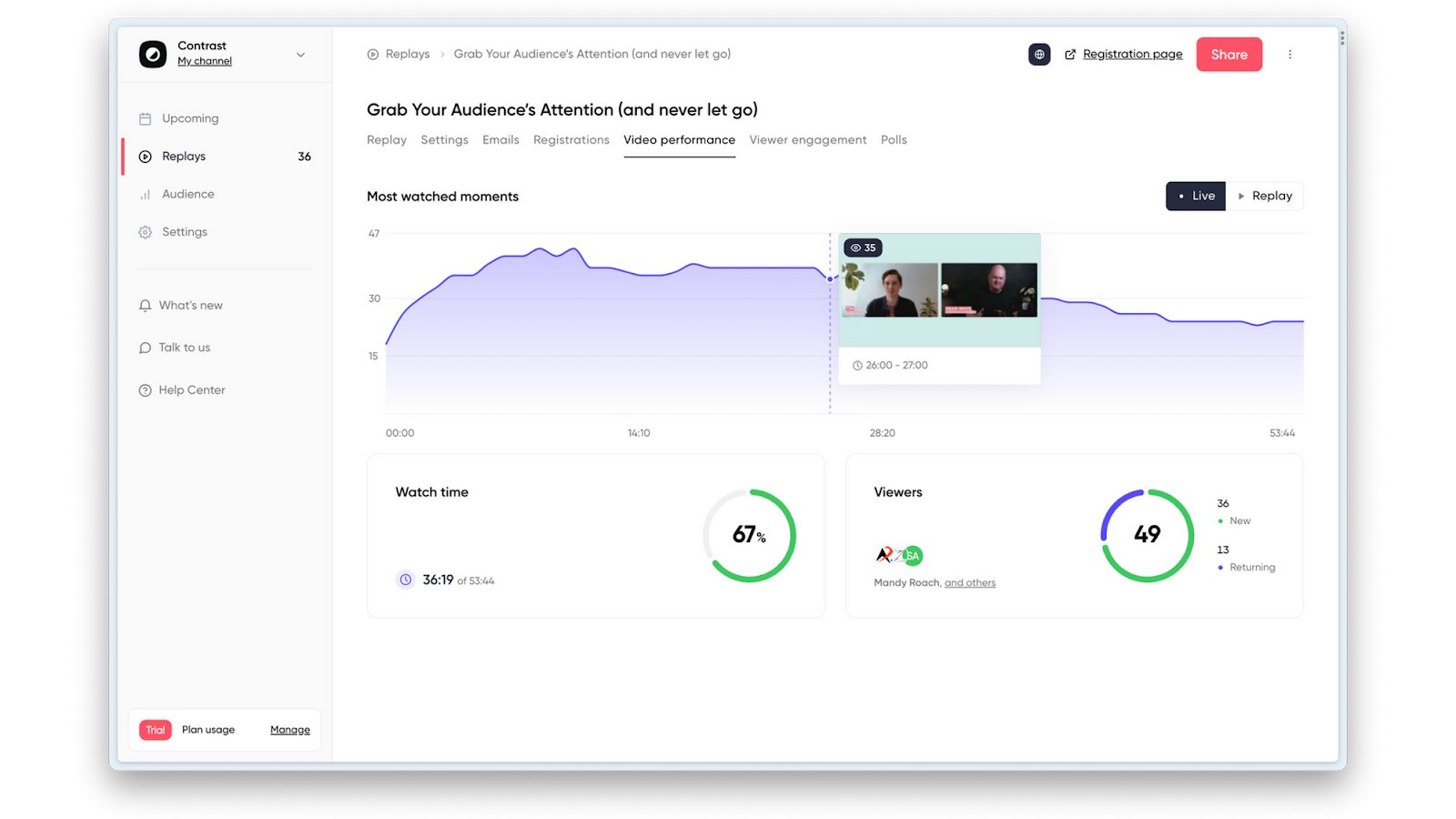
Understanding what to measure helps you optimize future events. Different formats require different success indicators that reflect their unique value propositions and business objectives.
Key performance indicators
Webinar success metrics include registration rates, attendance rates, and engagement levels measured through chat participation, polling responses, and questions submissions visible to all participants and hosts.
Lead conversion rates determine webinar ROI by tracking how many attendees become marketing qualified leads and eventually customers through your sales funnel and nurturing process.
Meeting success metrics focus on participation quality and objective achievement rather than scale or lead generation capabilities that webinars provide more effectively for marketing purposes.
Decision velocity and action item completion indicate meeting effectiveness better than attendance or engagement metrics used for webinars, reflecting their collaborative nature and internal focus.
ROI calculation framework
Webinar ROI calculations include platform costs, production time, and promotional investment compared against leads generated and revenue attributed to the event over time periods.
Customer acquisition costs often decrease when webinars generate high-quality leads that convert well through your sales process compared to other marketing channels.
Meeting ROI focuses on decision acceleration and relationship value rather than direct revenue attribution that webinars provide more easily through lead tracking and conversion measurement systems.
Opportunity costs must be considered for both formats since time spent on events reduces availability for other marketing activities and initiatives that might generate similar results with different resource allocation.
Conclusion
Webinar vs meeting decisions shape your marketing results significantly. Format choice determines your reach, engagement quality, and lead generation potential across every campaign you execute throughout the year. The rapid pace of technological innovation, especially the widespread adoption of AI for content creation and targeting, is fundamentally changing our approach to interactions.
Meetings excel at collaboration and relationship building when you need genuine feedback from participants or when intimate discussions drive better outcomes than broadcast presentations designed for larger audiences.
Webinars work best for lead generation, authority building, and scalable education when you want to reach large audiences while maintaining professional control over your message and presentation quality standards.
Smart marketing teams use both formats strategically rather than limiting themselves to a single approach throughout their entire customer journey and campaign calendar based on audience needs and business objectives.
Your content quality and execution standards matter more than platform features or technical specifications when determining event success and marketing impact on your target audience. The right format choice amplifies great content while the wrong choice undermines even excellent presentations.
Start with your objectives, compare your audience size, and choose the format that best serves your specific goals. Your prospects are waiting for valuable insights delivered through the most appropriate and engaging format possible.

Easy webinars to increase audience size
Start for free in 2 clicks. No credit card needed.
Start for free